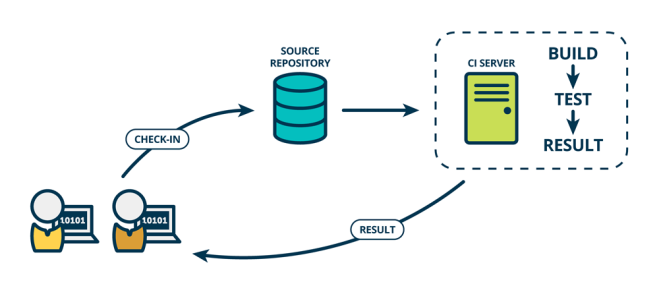Well, the IT industry is more focusing on Automation. IT companies are working on different tools to make the processes like
- Continuous integration of features
- Deployment of app code to the server.
- Model & Provision the infrastructure.
- Testing application and generate reports etc.
Automated. For the above processes, the IT industry is using different tools. Git is one of them. Basically, Git is the version-controlling system which provides the ability to track the changes of files. Version-controlling means different versions of application or files like version 1, version 1.1. and so on.
So you can manage different data sets and if you need the previous version of the dataset, you can get it easily with the help of version-controlling system and you can share your data with anyone.
IT industry is using Git as Source code management system in the software development process where developer shares his code or collaborate with his team members and keeps the files up to date.
Now the questions are where does that data store? How developer keeps it up to date? And How he will share the code files with other team members?
There is the only one solution of the above questions: Github. GitHub is a web-based distributed version-control platform where users/developers/testers can collaborate on or adopt open source code projects, share ideas and much more. Github allows users to create a remote repository to keep updated files & provide simple URL to share codes with his team.
What things we can perform through Git?
- We can create local and remote repository through Git.
- We can create different branches under the remote repository and we can merge branches with other branches easily when needed. When we start working on something or changing something- no matter how big or small—we create a new branch.
- We can add the source code to the local repository & once we are done with the work, we deploy that code files to the remote repository.
- When we start the work, at that time we can pull code files from remote to local to ensure accuracy and consistency of modules.
- You can update files and deploy to the remote repository.
- You can access all versions of all files in the Git repository at any time, it’s almost impossible to lose any part of a code.
- Our teammates can work on one project at the same time without interfering with each other, and without fear of losing any changes made by a colleague. In Git, There is no limitation for Collaborative work.
Another question is how is it helpful in automation?
As we have discussed, the IT industry is using Git to manage versions of source code & make the apps accurate and consistent by keeping the updated codes on the repository. So at the time of deployment or automation testing, we pull the code from Github and perform the operations through different tools for different processes. In case of deployment, if we are using Jenkins, we create the job and provide the remote repository git, after that Jenkins will take care of everything.
So in the automation process, we just need to provide the Git repository and tools will take care of everything, they will fetch the code from Github and perform the operations.
If you are looking to integrate Git with Eclipse IDE, please enroll in our free course:
Git Integration with Eclipse: For Selenium tester
Source URL: http://www.itlearn360.com/what-is-git-and-why-you-should-learn-git/



